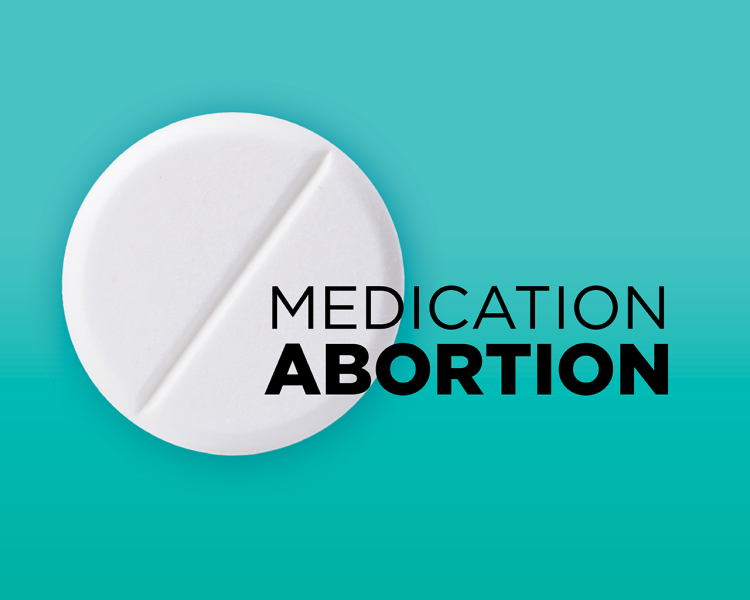[ad_1]
Despite overwhelming evidence that medication abortion is safe and effective, a federal judge known for his anti-abortion views is about to ban access to medication abortion using mifepristone across the United States. While the impact will be devastating for the entire country, such a decision will have especially harsh consequences for people in 10 states—half of which are considered to be protective of abortion rights and access.
A Baseless Court Case
Anti-abortion activists filed a lawsuit in November 2022—Alliance for Hippocratic Medicine v. U.S. Food and Drug Administration—that seeks to revoke the agency’s approval of mifepristone, which is used, along with misoprostol, in the most common medication abortion regimen. Mifepristone was approved by the FDA in 2000 following a rigorous review process and has amassed a lengthy track record of safe and effective use.
The use of medication abortion in the United States has steadily increased in the last 20 years. Since its approval, medication abortion has been used over four million times and has become so widely accepted by patients and providers that it now accounts for more than half of all US abortions—492,210 of the 930,160 abortions (53%) provided in 2020 were done with abortion pills.
Because medication abortion using mifepristone is such an important counterpart to in-clinic procedural abortion, it has long been targeted by the anti-abortion movement. A newer line of attack involves weaponizing the federal judiciary to end or limit use of the method by partially or fully revoking mifepristone’s approval.
The same anti-abortion group behind the Mississippi abortion law that was ultimately used by the US Supreme Court to overturn Roe v. Wade is also behind the legal attack against mifepristone. Fully aware of the weakness of their lawsuit and the scientific evidence stacked against them, the Alliance Defending Freedom went “court shopping” in hopes of finding a judge who might ignore the evidence and reach a decision based on ideology. That’s why the organization filed its case in a specific federal district court in Texas—a state where abortion, including medication abortion, is already banned. The case was heard by Judge Matthew Kacsmaryk, who was appointed by Donald Trump and has a history of close relationships with far-right religious groups.
If the baseless lawsuit results in mifepristone’s use being banned or sharply curtailed, what is already a severe crisis in abortion access provoked by the US Supreme Court overturning Roe v. Wade will get dramatically worse. As of February 6, abortion is banned in 12 states and unavailable in an additional two, with more states expected to follow.
All States Where Abortion Is Available Will Be Impacted…
All states where abortion is currently legal and available will be hit hard if providers were only able to offer in-clinic procedural abortions or had to switch to offering the misoprostol-only medication abortion regimen. Patients will be denied access to the safe and effective two-drug regimen, which they can now obtain from a clinic, are increasingly able to receive as pills shipped through the mail after being prescribed by their provider via telehealth and soon may be able to pick up from a participating pharmacy.
Without medication abortion using mifepristone as an option, demand for procedural abortions could increase significantly—leading to overwhelmed clinics and providers, much longer wait times, further unnecessary delays, and more complicated and costly logistics for many patients. It will be difficult, if not outright impossible, for providers that only offer medication abortion using mifepristone to switch to offering procedural abortions instead. Some of these providers will pivot to offering medication abortion using only misoprostol, while others will be forced to stop offering abortion services entirely.
All of this will affect not only people in states where abortion is available, but also those traveling from states where it is not.
…But Some States Will Be Hit Much Harder Than Others
The impact of eliminating access to medication abortion using mifepristone will differ greatly from state to state and could be especially pronounced in rural counties and regions of any state. In addition, the consequences of losing the use of mifepristone for medication abortion will reach far beyond individual counties, extending to neighboring counties, the entire state or across state lines. Some providers will shift to offering a misoprostol-only option, while others will likely stop offering medication abortion altogether.
These 10 states could experience the most severe impact if mifepristone were banned, as they could have a particularly sharp drop in the share of women of reproductive age who live in counties with an abortion provider if medication abortion–only providers do not begin offering a regimen with misoprostol alone:
- Colorado
- The share of counties with an abortion provider will drop from 22% to as low as 14%.
- The share of women of reproductive age living in a county with an abortion provider will drop from 82% to as low as 56%.
- Colorado is considered to be “Protective” of abortion rights and access based on policies in effect as of February 6, 2023.
- Georgia
- The share of counties with an abortion provider will drop from 5% to as low as 4%.
- The share of women of reproductive age living in a county with an abortion provider will drop from 45% to as low as 29%.
- Georgia is considered to be “Very Restrictive” of abortion rights and access based on policies in effect as of February 6, 2023.
- Abortion is banned in Georgia after six weeks of pregnancy. Since medication abortion is especially important for ending an early pregnancy, disruptions to facilities’ medication abortion protocols or wait times for an appointment for a procedural abortion could push many patients past the state’s gestational age limit.
- Indiana
- The share of counties with an abortion provider will drop from 5% to as low as 3%.
- The share of women of reproductive age living in a county with an abortion provider will drop from 34% to as low as 26%.
- Indiana is considered to be “Restrictive” of abortion rights and access based on policies in effect as of February 6, 2023.
- Iowa
- The share of counties with an abortion provider will drop from 4% to as low as 2%.
- The share of women of reproductive age living in a county with an abortion provider will drop from 31% to as low as 24%.
- Iowa is considered to be “Restrictive” of abortion rights and access based on policies in effect as of February 6, 2023.
- Maine
- The share of counties with an abortion provider will drop from 88% to as low as 19%.
- The share of women of reproductive age living in a county with an abortion provider will drop from 84% to as low as 46%.
- Maine is considered to be “Protective” of abortion rights and access based on policies in effect as of February 6, 2023.
- Montana
- New Mexico
- The share of counties with an abortion provider will drop from 9% to as low as 3%.
- The share of women of reproductive age living in a county with an abortion provider will drop from 52% to as low as 34%.
- New Mexico is considered to be “Very Protective” of abortion rights and access based on policies in effect as of February 6, 2023.
- Pennsylvania
- The share of counties with an abortion provider will drop from 19% to as low as 15%.
- The share of women of reproductive age living in a county with an abortion provider will drop from 63% to as low as 54%.
- Pennsylvania is considered to be “Restrictive” of abortion rights and access based on policies in effect as of February 6, 2023.
- Vermont
- The share of counties with an abortion provider will drop from 29% to as low as 21%.
- The share of women of reproductive age living in a county with an abortion provider will drop from 57% to as low as 48%.
- Vermont is considered to be “Very Protective” of abortion rights and access based on policies in effect as of February 6, 2023.
- Washington
- The share of counties with an abortion provider will drop from 41% to as low as 28%.
- The share of women of reproductive age living in a county with an abortion provider will drop from 90% to as low as 80%.
- Washington is considered to be “Protective” of abortion rights and access based on policies in effect as of February 6, 2023.
Source: The Guttmacher Institute
[ad_2]












